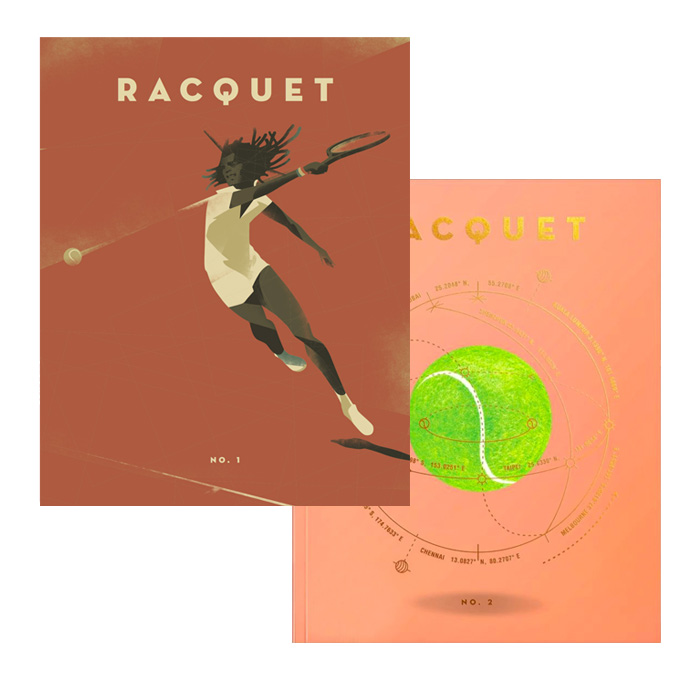By Giri Nathan
A professional tennis player has spent years dutifully obeying the instructions of various coaches. They are elite at that particular skill. Why is it so hard for these same people to follow straightforward instructions, now that the risks of not listening are so much more severe? Maybe if you incentivized them with ranking points to stay home, we’d actually get somewhere, because this isn’t working.
Sascha Zverev starred in Novak Djokovic’s ill-fated Adria Tour, which was shut down prematurely once his peers Grigor Dimitrov, Borna Coric, and Viktor Troicki tested positive for COVID-19. Novak, his wife, and coach Goran Ivanisevic would also later test positive. Zverev, who was seen dancing shirtless with several of the above at a Belgrade nightclub, announced a negative test result, but said that he would continue with regular testing and follow “self-isolating guidelines advised by our doctors.” Just six days later came a damning video, circulated by the journalist (and Racquet editor) Ben Rothenberg. It’s a party, with the Mediterranean Sea in the background and a roof overhead; dozens of unmasked people are dancing and milling around; Jay-Z and Kanye West’s “Ni**as in Paris” is blaring. Then, mouthing the words and bobbing, comes Sascha’s unmasked face. Other camera angles confirmed that it was him. I don’t know what the doctors told Zverev, but I doubt that “raging at an indoor day party on the French Riviera” was high on the list of official recommendations after spending a weekend in a confirmed coronavirus cluster.
Sascha Zverev six days ago after Adria Tour coronavirus cluster:
— Ben Rothenberg (@BenRothenberg) June 28, 2020
“I deeply apologize to anyone that I have put at risk...I will proceed to follow self-isolating guidelines...stay safe 🙏.”
Sascha Zverev four hours ago: pic.twitter.com/vqBXvYdxkv
I don’t want to paint tennis players with too broad a brush—it does appear that players such as Madison Keys, Victoria Azarenka, Sloane Stephens, and Danielle Collins were able to partake in a safe exhibition in Charleston without somehow all stumbling into a nightclub. Congrats to the women for proving that this can, in fact, be done.
But can it be done at scale? And is it even worth trying? Next month, the plan is for top players to enter a “bubble” in New York in order to play a “Cincinnati” Open and the US Open, with one week in between. The bubble is effectively the TWA Hotel, attached to John F. Kennedy Airport. Movement will be restricted; the usual entourages will not be allowed in. Players are not to leave the bubble until they are eliminated. Testing will be frequent. (Djokovic announced this week that he’d tested negative for the virus, 10 days after announcing he’d contracted it.) The notion that any of this will work safely rests on the conscientiousness of individual players. When asked how strictly the bubble will be enforced, tournament director Stacey Allaster said, “I think as we are all returning to work, we all have a responsibility to ourselves, to our families, to our fellow co-workers. I have a lot of confidence in these professional athletes.” The past few weeks have not generated many reasons for confidence.
Yet another reason for nonconfidence: John Isner, who will play an exhibition in Georgia this weekend, with fans in attendance, dismissed people concerned about virus transmission as “coronabros.”
The tennis world might be baffled by the term, but I could smell its origins. So I consulted Samer Kalaf, a leading authority on sports media buffoons. “The ‘coronabro’ term, to the best of my knowledge, comes from Clay Travis, a jackass who’s occasionally on Fox Sports. Previously, Clay was a replacement-level sports meathead until he realized there were better prospects in becoming a replacement-level Rational Man. He’s bad at gambling and even worse at projecting a worldwide pandemic,” Kalaf wrote. “Since March, he has been wrong about the coronavirus in every conceivable way and blocks many people who point this out to him. Anyone who is more cautious about the pandemic than Clay is a ‘coronabro.’ This word was clearly invented out of desperation because it sucks and is not catchy in the slightest. It makes total sense that an established idiot such as John Isner would gravitate to this guy.” Thanks, Samer, for this expert testimony.
It is startling how few high-profile tennis players seem capable of grasping the danger of a worldwide pandemic and advocating for caution. Trust the usual loud voice to break through the silence, though. “Seeing Sascha Zverev again, again, how selfish can you be?” asked Nick Kyrgios, from inside a car. “This tennis world is pissing me off, seriously. How selfish can you all get?” When Boris Becker bizarrely came at the Australian, because “anyone telling off fellow sportsmen is no friend of mine,” the two traded smears. One said “rat” (Boris) and the other said “doughnut” (a Nick special, duh). Kyrgios may be one of the very few who comes out of this who-knows-how-long suspension looking like a reasonable and responsible person. As it turns out, not caring about tennis cuts both ways—it may lose you some easy matches, but it might also allow you to better locate its importance in the broader scheme of things.
My bad. (Getty Images)
Buy Now
Issue Nos. 1-2
Copies of Racquet No. 1, our launch issue, are almost sold out. Order a copy bundled with our sophomore effort for just $25. *Free shipping to domestic USA*



